Nokia Lumia 925 Review
Nokia Lumia 925
The Lumia 920 gets a slimmer body and a metal frame.
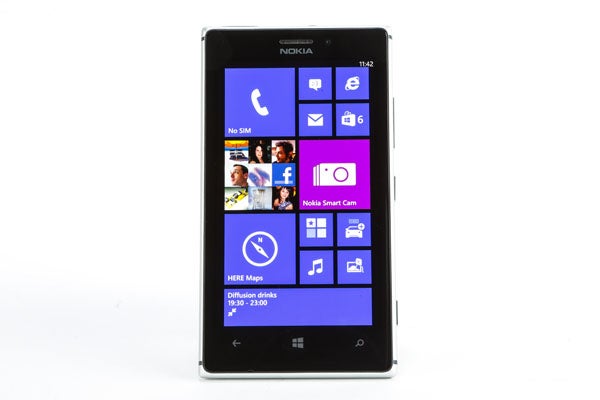
Sections
- Page 1 Nokia Lumia 925 Review
- Page 2 Software, Performance and Browsing Review
- Page 3 Camera Performance, Image Quality Review
- Page 4 Camera Modes Review
- Page 5 Battery Life, Call Quality and Verdict Review
Verdict
Pros
- Solid, attractive build
- Good display
- Versatile camera
- Excellent call quality
Cons
- PenTile screen
- Non-expandable memory
- Limited Windows Phone 8 apps selection
Key Specifications
- Review Price: £469.00
- Dual-core 1.5GHz Krait CPU
- 1GB RAM
- 4.5-inch 1,280 x 768 pixel AMOLED screen
- Windows Phone 8
- 8-megapixel PureView camera with dual-LED flash
What is the Nokia Lumia 925?
To date, the top Nokia Lumia series phones have all used smooth and seamless polycarbonate bodies. The Nokia Lumia 925 is the first to introduce metal to the family. It’s a renegade.
In ditching the integrated wireless charging of the Lumia 920, Nokia has also produced a slimmer, more accessible phone. Yet it benefits from the same advanced camera features of that mobile.

Nokia Lumia 925 – Design
Internally, the core of the Nokia Lumia 925 is fairly similar to the Lumia 920, but externally it’s a completely different proposition. Rather than a chunky, heavy and colourful curvy block of glossy plastic, it is a non-unibody monochrome device.
This is all down to the phone’s anodised aluminium edge. A strip of metal runs around the Lumia 925’s sides, and there’s no attempt to hide the seam between these sides and the contoured polycarbonate (plastic) plate on the rear.
The two parts are intended to complement each other, and that’s why Nokia has opted for white, black and grey rear parts, rather than colourful ones. After having been lauded for the curvy polycarbonate bodies of phones like the Lumia 800, this new style is a risk. But it works.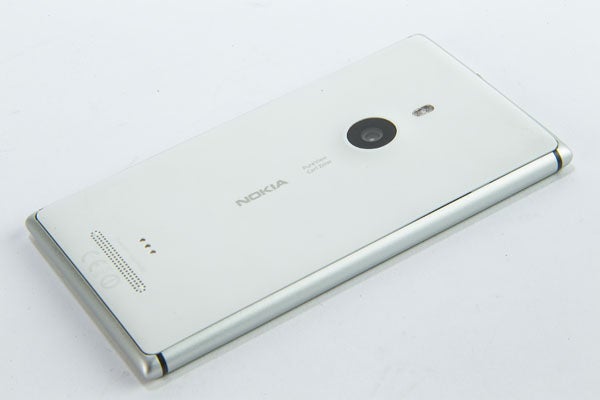
Build quality is excellent, with none of the clicking or flexing you might see in a phone like this from a less-capable mobile-maker. The seam between the plastic rear and metal sides is a little wider on one edge – visibly so – but Nokia says this is to help professional repairers fix the phone in future, giving them much easier access to its innards.
In-hand comfort is great, thanks to the curves of the aluminium sides and that the Lumia 925 is a good deal less wide than top phones like the Samsung Galaxy S4 – mainly due to its mid-size 4.5-inch screen.
There are some hardware inflections that some won’t like, though. The camera lens housing is large, a bit too easy to obstruct with a hand, and it sticks out ever-so-slightly from the Lumia 925’s back. This is because of the mechanical image stabilisation components that have to fit in – the phone is just 8.5mm thick, so too skinny to avoid this. The Lumia 920’s camera doesn’t poke out, but that phone is 2mm thicker – a lot in mobile terms – and 40g heavier.
Where the Lumia 900 was conspicuously huge and heavy, the Nokia Lumia
925 appears ‘normal’ in the world of super-slim phones in which we live.
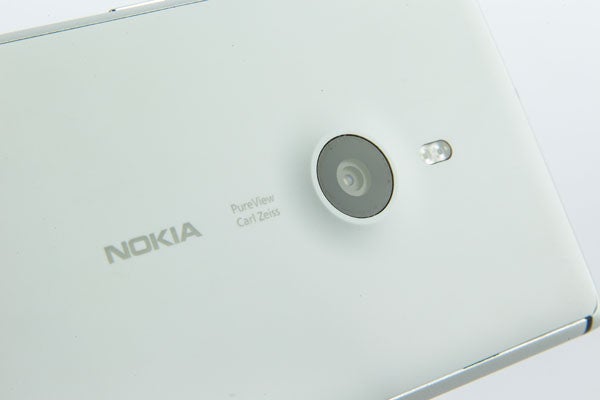
Part of the weight loss is down to the removal of integrated wireless charging. This time around, you need to buy a separate wireless charging exoskeleton, which hooks into the phone’s battery through three little metal circles on the Lumia 925’s rear.
These charging shells supply the traditional Lumia series splash of colour too, although muted black/white ones are available. The shells cost £25, and Qi wireless charging pads start at around £30. For a full wireless charging setup, you’re looking at an extra £50-odd.
The Lumia 925 is a departure from Lumia series norms in some respects, but other design elements remain. On the top edge of the phone is a microSIM slot accessed using a paperclip-like tool included in the box – classic Lumia. There is also no memory card slot in the phone, just 16/32GB of internal memory (32GB exclusive to Vodafone), so the only sockets on show are the headphone jack and microUSB port – which sit next to each other up top. 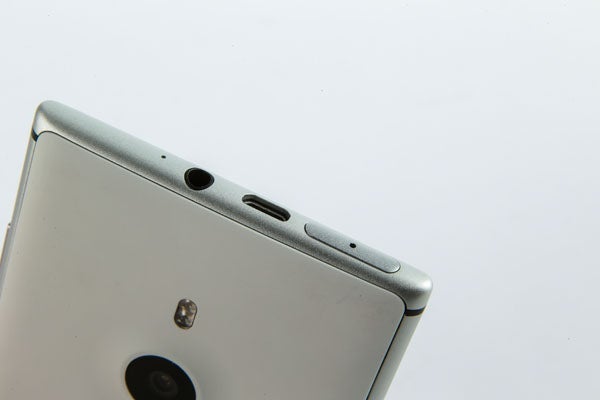
All other edges are left blissfully free of ports. It’s good for the look and feel of the Lumia 925. There’s just the Lumia-standard trio of buttons on the right edge – volume, power and the Windows-mandated shutter button.
As only the edges of the Nokia Lumia 925 are made of metal, it doesn’t have quite the hard, cool impact of holding an HTC One. But it is one of the more attractive, recognisable phones of the year.
Nokia Lumia 925 – Connectivity
Much as it likes to keep things simple on hardware connections, it more-or-less has the lot for wireless. Aside from basics like Bluetooth, 3G and GPS, it has NFC and 4G mobile internet. It’s healthily future proofed.
The Lumia 925 also has an FM radio, which is often left out of top-end phones.
Nokia Lumia 925 – Screen
Like most of the Lumia family, the Nokia Lumia 925 uses an AMOLED screen, one that is 4.5 inches across. However, this is not the screen type used by the phone’s closest relative, the Lumia 920, which has an IPS LCD display. 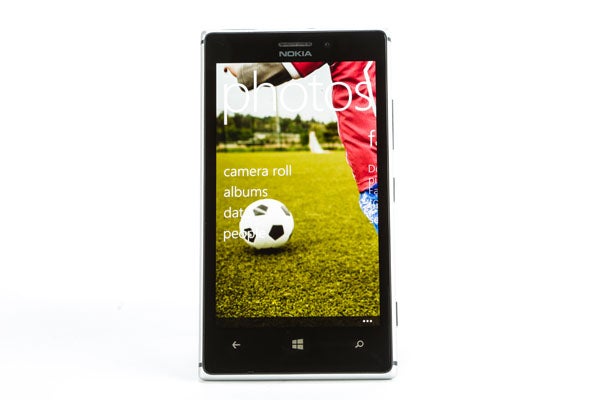
The Lumia 925’s screen resolution is 1,280 x 768 pixels, resulting in pixel density of 332dpi. This is way below the pixel-packed-ness of 1080p phones like the HTC One and Galaxy S4, however from normal viewing distances the screen looks near-pin sharp.
Look closely and it does show, but not primarily because of the pure number of pixels. The Lumia 925 has a PenTile screen. This refers to the pattern of red, blue and green dots that make up each screen pixel.
This is not a regular sub-pixel arrangement like ‘standard’ RGB, but slightly irregular ‘RGBG’ layout where rows of pixels do not line up exactly.
Get your eye right up next to the screen and this manifests as a slight fuzziness in text, and a slight patterning in blocks of solid white. However, thanks to the HD-grade resolution, this effect is very minor – rather than serious as it was in 480 x 800 AMOLED phones like the Nokia Lumia 800. 
The PenTile effect in action, super close-up
In this year’s top-end phones, you need to become hyper-critical to pick between their screens.
In common with most AMOLED screens, contrast is excellent and colours are vivid. The Lumia 925 also uses Nokia’s PureMotion screen tech – yes it’s marketing-speak, but refers to something real.
OLED screens can suffer from image ghosting when displaying fast-moving images, and Nokia has tried to remedy this by increasing response times by ‘overdriving’ the screen by upping the voltage. And it seems to work – flicking through Windows Phone 8’s ultra-fast apps menu leaves no noticeable ‘trails’.
OLED screens are often problematic in other ways too. They tend to have oversaturated colours, looking less natural than those of an IPS screen. Nokia has sensibly provided away to combat this issue.
Deep in the Nokia Lumia 925 settings is a menu that lets you alter the colour saturation and temperature of the display. The ‘neutral’ colour temperature has a slightly warm (orange) skew, but having the temperature slider to play with lets you fix this. 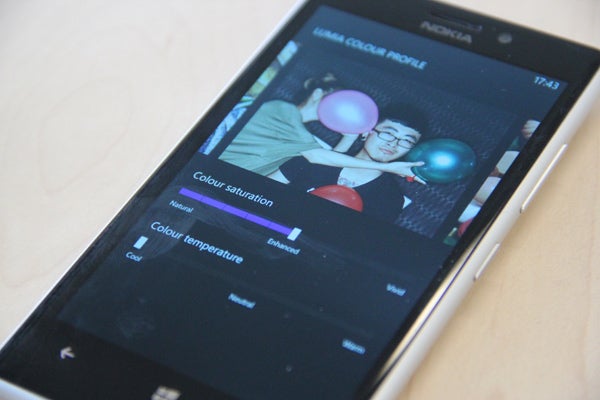
What Nokia hasn’t been able to solve with software is the slight blue cast to AMOLED screens when they’re viewed at an angle. However, it’s far less severe than in some earlier-generation phones, and is so minor an issue anyway that it is not worth worrying about much when buying a phone – who routinely looks at their phone from an angle in day-to-day use?
There is on spec question that does matter, though – why did Nokia switch to IPS in the Lumia 920, only to revert to AMOLED in the Lumia 925? It was to help the phone stay slim, apparently. The screen structure of the latest OLED panels is very thin, mitigating the added bulk of the clever camera tech inside the phone.
How we test phones
We test every mobile phone we review thoroughly. We use industry standard tests to compare features properly and we use the phone as our main device over the review period. We’ll always tell you what we find and we never, ever, accept money to review a product.



